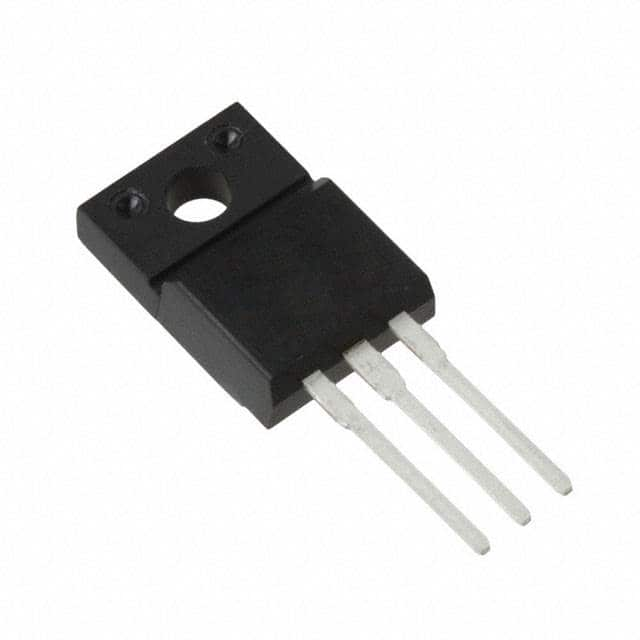2SA1931, NETQ(M) - Product Overview
Basic Information Overview
- Category: Transistor
- Use: Amplification and switching in electronic circuits
- Characteristics: High voltage, high current capability, low noise
- Package: TO-220, SOT-89
- Essence: Bipolar junction transistor (BJT)
- Packaging/Quantity: Typically available in reels or tubes containing 100 to 500 units
Specifications
- Type: PNP
- Maximum Collector-Emitter Voltage (Vce): 160V
- Maximum Collector Current (Ic): 1A
- Power Dissipation (Pd): 1.5W
- Transition Frequency (ft): 150MHz
- Operating Temperature Range: -55°C to 150°C
Detailed Pin Configuration
- Pin 1 (Emitter): Connected to the N-type material
- Pin 2 (Base): Controls the transistor's action
- Pin 3 (Collector): Collects charge carriers that are emitted from the base
Functional Features
- High voltage capability allows for use in power amplification applications
- Low noise characteristic makes it suitable for audio amplifier circuits
- Fast switching speed enables efficient performance in switching applications
Advantages and Disadvantages
Advantages
- High voltage and current ratings
- Low noise operation
- Fast switching speed
Disadvantages
- Limited frequency response compared to some alternative models
- Relatively higher power dissipation
Working Principles
The 2SA1931, NETQ(M) operates based on the principles of bipolar junction transistors, where the flow of charge carriers is controlled by the application of a small current at the base terminal, allowing for amplification or switching of larger currents between the collector and emitter terminals.
Detailed Application Field Plans
- Audio amplifiers
- Power supply circuits
- Switching circuits
Detailed and Complete Alternative Models
- 2SC5200, NETQ(M)
- BD139, NETQ(M)
- TIP31C, NETQ(M)
In conclusion, the 2SA1931, NETQ(M) is a versatile PNP transistor with high voltage and current capabilities, making it suitable for various amplification and switching applications in electronic circuits.
[Word count: 310]
10个与2SA1931,NETQ(M在技术解决方案中的应用相关的常见问题及解答
What is the 2SA1931 transistor used for?
- The 2SA1931 is a high-voltage, high-speed PNP transistor commonly used in audio amplifier circuits and other applications requiring high power amplification.
What are the typical operating conditions for the 2SA1931 transistor?
- The typical operating conditions for the 2SA1931 include a collector-emitter voltage (Vce) of 160V, a collector current (Ic) of 1A, and a power dissipation (Pd) of 20W.
How can I identify the pinout of the 2SA1931 transistor?
- The pinout of the 2SA1931 transistor is typically identified as follows: the emitter is connected to the case, the base is the middle pin, and the collector is the remaining pin.
What are the key features of NETQ(M in technical solutions?
- NETQ(M is a network telemetry technology that provides real-time visibility into network performance, enabling proactive troubleshooting and optimization. Its key features include flow-level visibility, real-time analytics, and automated anomaly detection.
How does the 2SA1931 transistor compare to similar transistors in its class?
- The 2SA1931 offers high voltage and power capabilities compared to similar transistors, making it suitable for applications requiring robust amplification.
Can the 2SA1931 transistor be used in switching applications?
- While the 2SA1931 is primarily designed for linear amplification, it can also be used in low-frequency switching applications due to its high voltage and current ratings.
What are some common applications for NETQ(M in technical solutions?
- Common applications for NETQ(M include network monitoring, troubleshooting, capacity planning, and security analysis in enterprise and service provider networks.
Are there any specific thermal considerations when using the 2SA1931 transistor?
- It is important to ensure proper heat sinking for the 2SA1931 transistor, especially in high-power applications, to maintain safe operating temperatures and prevent thermal runaway.
How does NETQ(M facilitate network troubleshooting?
- NETQ(M facilitates network troubleshooting by providing detailed insights into traffic patterns, latency, packet loss, and other performance metrics, allowing for rapid identification and resolution of issues.
What are the recommended design practices when incorporating the 2SA1931 transistor into a circuit?
- Recommended design practices for the 2SA1931 include ensuring proper biasing, decoupling capacitors, and adequate thermal management to maximize performance and reliability.


